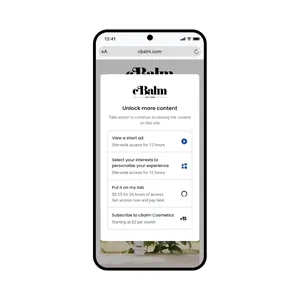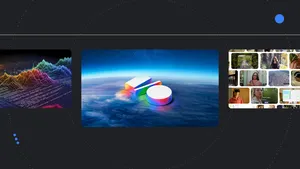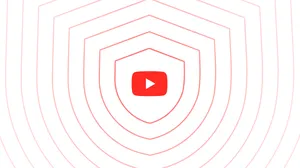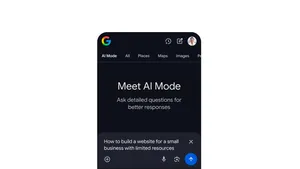Transparency and brand safety on Google Video Partners
Update: July 13, 2023
A few weeks ago, we published some facts about our Google Video Partners (GVP) program in response to an inaccurate report. Based on conversations with clients, a review of the claims in the report and findings from third parties, we wanted to publish an update with additional facts.
A faulty methodology will lead to faulty conclusions. Unfortunately, the report uses irresponsible and faulty methodology for the research which has grossly misled advertisers, agencies and the broader public. Among the issues, the report uses sampling and confirmation bias, asks leading questions and overlooks safety and billing protocols, all of which led to flawed generalizations and conclusions.
Third parties have discredited the key findings of the report. The claim that up to 80% of ad placements in GVP are below Google’s standards is utterly false. Independent third parties that specialize in reporting results around campaign effectiveness and safety have publicly contradicted this claim. DoubleVerify recently reported that 93% of GVP inventory is viewable and that 78% is audible, which is well above open web benchmarks. And IAS similarly noted that 93% of GVP inventory is viewable. Our own internal analysis similarly refutes this claim in the report.
Further, third party results refute the report’s claim that up to 90% of video ad campaigns end up on GVP. Though each campaign set up may be slightly different, Pixability found that across all their video campaigns only 11% of their ads end up on GVP, whereas IAS found that GVP accounted for 21% of campaigns with both YouTube and GVP inventory. These align with our own data, which shows that the overwhelming majority of video ad campaigns serve on YouTube, not GVP.
Just because an ad is served, doesn’t mean we charged the advertiser. The report ignores or is unaware of this distinction and incorrectly assumes that a served impression is automatically billed. We actively monitor the Google Video Partners network, using a combination of automated filters and human reviews, and if our systems detect invalid traffic, we don’t bill an advertiser. Even when invalid traffic is detected after-the-fact, Google marks this traffic as invalid and we issue credits to the affected buyers when appropriate and possible.
Not all ads that run on GVP are skippable instream ads. There are many types of video ad formats that run on GVP. For example, for performance campaigns like Video Action Campaigns, we do show ads on both instream (in the video player) and outstream (outside of the video player) on GVP. Advertisers are well aware of these distinctions when they set up their campaigns.
We continue to expand third-party partnerships to instill even more confidence. Advertisers running video ads have many ways to evaluate the effectiveness of their campaigns on YouTube and GVP through Google or verified third-party firms. Our own viewability measurement tools and invalid traffic defenses are audited and accredited by the Media Rating Council (MRC) to ensure that the metrics our advertising solutions deliver are trusted and align with industry standards. Google Video Partners also supports independent, third-party verification from DoubleVerify, Integral Ad Science, and Moat for viewability and invalid traffic. To build on these efforts, we will expand our partnership with IAS to provide brand safety and suitability measurement on GVP inventory in the near future.
We stand behind our work in this space and others in the industry do as well. Enforcing our policies is an ongoing priority and we remain vigilant in ensuring that advertisers can meet their objectives. Advertiser success is our success. We are always willing to hear legitimate feedback from partners and third parties about how our products work and how we can improve.
Original Post: June 27, 2023
Brands care deeply about where their ads are placed and so do we. A recent report by a third party used unreliable sampling and proxy methodologies and made extremely inaccurate claims about the Google Video Partner (GVP) network.
We want to set the record straight about the options available to advertisers and the investments we make in ensuring brands can reach high-quality audiences across this partner network.
GVP is an effective complement to YouTube ad campaigns. The report wrongly implies that most campaign spend runs on GVP rather than YouTube. That’s just not right. The overwhelming majority of video ad campaigns serve on YouTube. Video advertisers can also run ads on GVP, a separate network of third-party sites, to reach additional audiences, if it helps them meet their business objectives. Say, for example, you are a gaming advertiser. You might want to reach people on YouTube who love gaming but also on sites and apps that cater to those groups. While only a small percentage of video ads appear on GVP, it’s effective: we’ve seen adding GVP to YouTube campaigns increases reach by over 20% for the same budget.
Advertisers are in control. When advertisers create video ad campaigns, they can clearly see that their ads may run on third-party sites via GVP during the campaign setup. We offer the option to opt out at any time. They can also decide where their content may appear. Advertisers can exclude specific websites and URLs along with entire topics or apps they wish to avoid when running ads. We also share real-time campaign reporting with our advertisers. This means partners can see where their spend is going, including how much is serving on YouTube vs. third-party sites or apps. Advertisers can always update their campaign settings based on that information.
Ad inventory across the Google Video Partner network is more than 90% viewable. This is well above industry norms. The claims in the third-party report simply aren’t right. Put simply, over 90% of ads on GVP are visible to people across the web — and advertisers are only paying for ads when they are viewed. We use real-time ad quality signals to determine if people are present and paying attention that help us decide whether to serve a video ad in a Google Video Partner site or app. Those signals include viewability, the size and position of the player and whether people are engaging with the ads.
In addition to the high bar we set on YouTube, we have strict policies that all third-party publishers, including Google Video Partners, must follow. We actively enforce these policies. Our policies prohibit engaging in disruptive, invasive or deceptive ad-serving practices along with other specific practices which some would consider indicate that they are made for advertising. This includes serving ads on hidden browsers, pages with more ads than content or ads that lead to accidental clicks. To give you a sense of how serious we are about this, in 2022 we stopped serving ads on more than 143,000 sites for violating our policies.
We offer third-party validation for ads running on Google Video Partners content. We partner with outside organizations to help us ensure publishers are complying with our policies. Google Video Partners supports independent, third party verification from DoubleVerify, Integral Ad Science, and Moat for viewability and invalid traffic. These partnerships, combined with the work we already do internally to enforce our policies, give advertisers reassurance about their ad placements.





